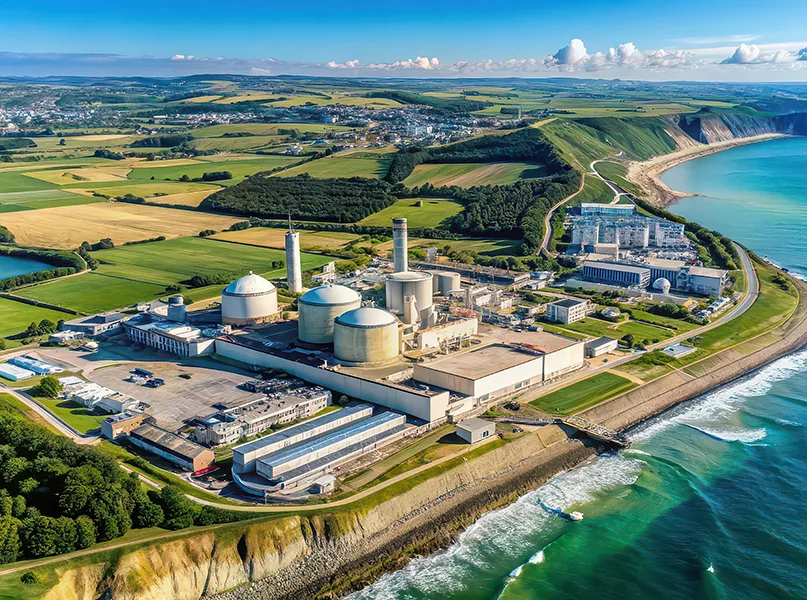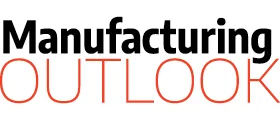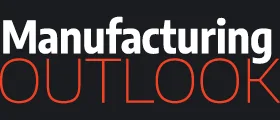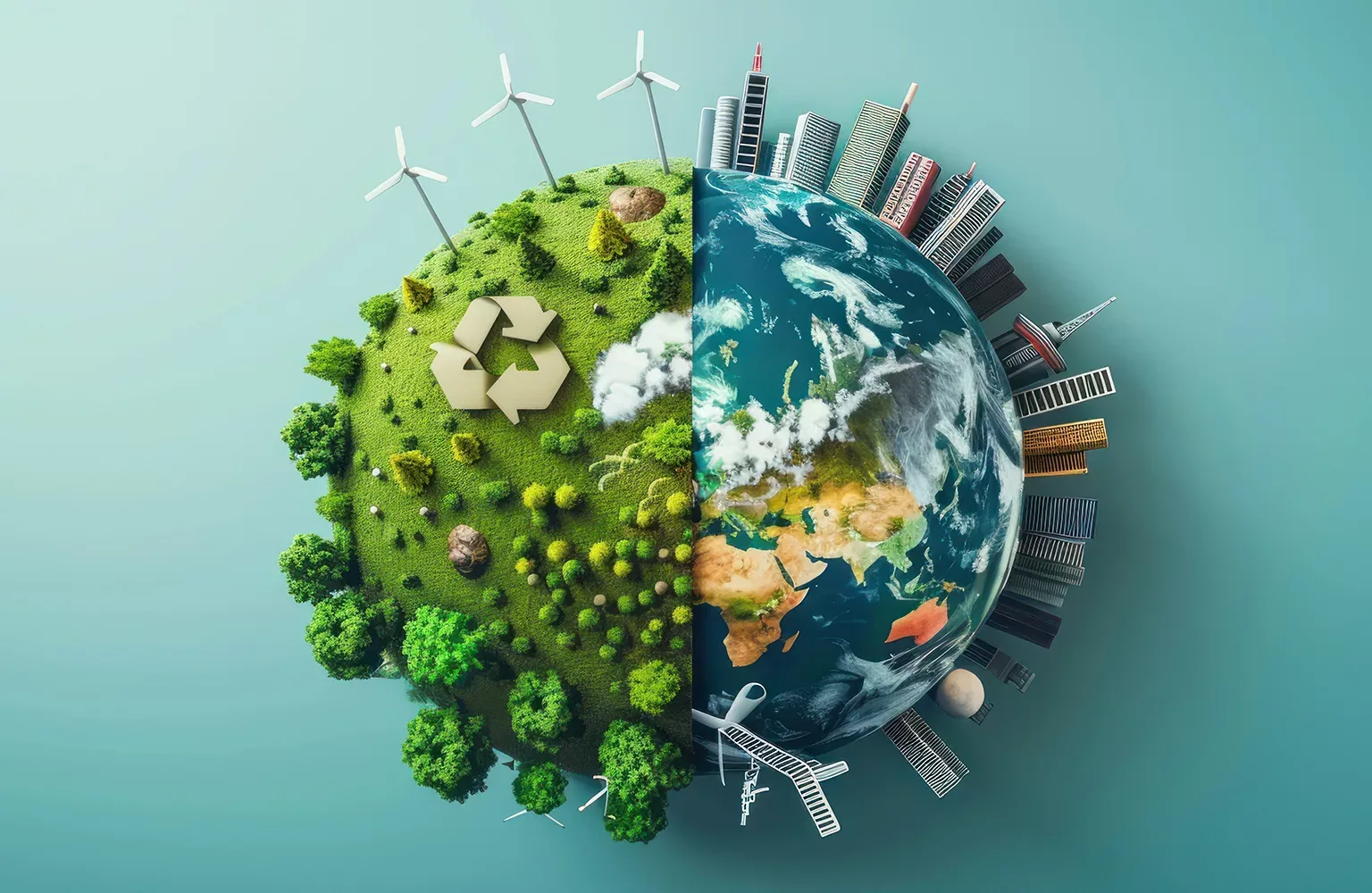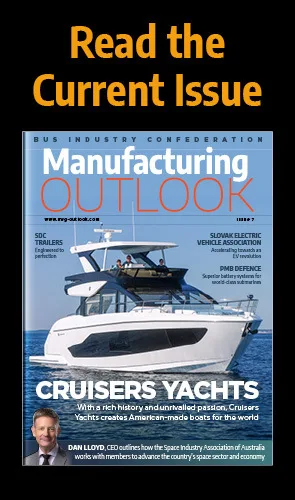Chris Hocknell, Director of Eight Versa – a leading sustainability consultancy firm – explores how manufacturing businesses can be more effectively integrated into global policy considerations and the worldwide shift towards renewable energy.
SUSTAINABILITY VS MANUFACTURING : FRIEND OR FOE?
Sustainability has become a buzzword in the manufacturing sector as businesses worldwide promote their green credentials and commitments to environmentally-friendly practices.
The prevailing narrative suggests that sustainability and profitability go hand in hand, with claims that eco-friendly practices lead to cost savings, improved brand image, and long-term viability. However, the reality is far more complex, particularly for industries in Europe.
Sustainability is often presented as both an ethical imperative and a strategic opportunity. Companies highlight benefits such as cost reductions from energy efficiency, waste minimisation, improved brand reputation, and increased innovation. Adopting eco-friendly practices is also seen as a way to manage risks and ensure compliance with stringent environmental regulations.
In reality, businesses struggle to balance environmental responsibility with economic viability, as transitioning to sustainable manufacturing comes with significant costs, often hidden or ignored in corporate reports.
The initial investment in new technologies and processes can be prohibitively high, disrupting supply chains and reducing operational efficiency in the short term. Moreover, the ongoing costs of sourcing sustainable materials and renewable energy further complicate the economic equation for manufacturers.

THE RENEWABLE ENERGY PARADOX
One major challenge, especially in Europe, is the integration of renewable energy into the grid. While renewable energy is often portrayed as cheaper and more sustainable than fossil fuels, many European countries have seen electricity prices rise significantly.
Germany and Denmark, for example, consistently report some of the highest prices in Europe. In the UK, electricity prices increased by 60 percent between 2010 and 2020; and in comparison, wholesale gas prices dropped by 40 percent over the same period.
The reality is that there are system-level costs to renewables, often ignored by lobbyists who use metrics that just focus on the generation cost of each technology.
For example, upgrading grid infrastructure to accommodate renewables, as in Germany’s SuedLink project, incurs substantial expenses. Meanwhile, maintaining grid stability becomes a major issue with variable sources like wind and solar that require gas back-up to fill the generation gap, build capacity markets, and for additional energy storage facilities.
Combined with the need to ‘overbuild’ renewable capacity due to its lower load factor, all of these variables aggregate to a higher cost system, which has slowly undermined the competitiveness of European manufacturing.
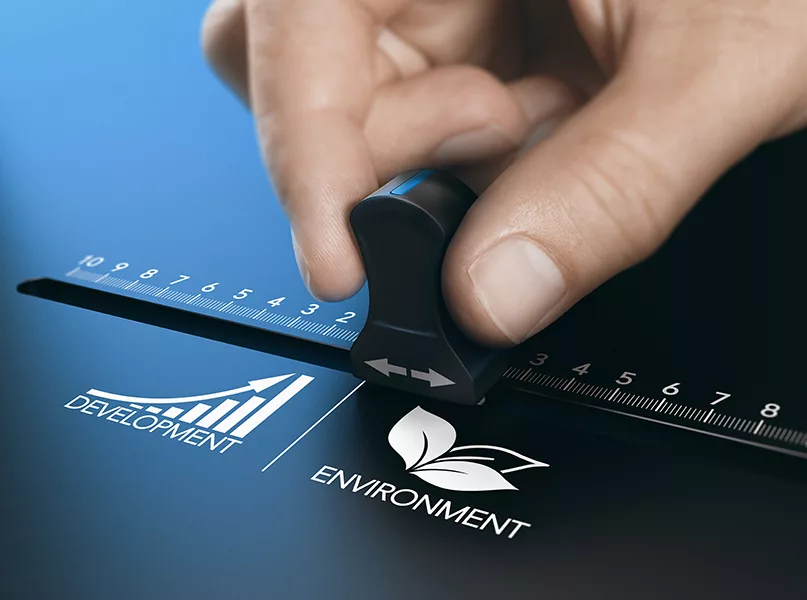
IMPACT ON MANUFACTURING AND GLOBAL SHIFTS
Rising energy costs affect the manufacturing industry on a global scale. The situation forces energy-intensive operations to relocate to regions with lower energy prices and looser environmental regulations.
Markets like China, India, Indonesia, and Vietnam have all experienced substantial growth. The former has taken the mantle of the workshop of the world over the last three decades, often achieving a year-on-year increase in manufacturing output. India and Indonesia are following suit by exceeding five percent growth per annum.
Conversely, we’ve seen substantially reduced investment in European manufacturing and a shift towards less energy-intensive products and processes. In the best-case scenario, automation becomes the key strategy for European manufacturers seeking to offset rising energy costs, in the worst case, it’s outright offshoring.
This decline has also occurred in other high-income economies like the US and Japan, albeit to a lesser extent in the former as the country is blessed with a bounty of natural resources and prefers to talk a good climate game but let Europe do the bulk of deindustrialisation.
THE CARBON LEAKAGE PROBLEM
This shift leads to a phenomenon known as carbon leakage, where stricter environmental regulations in one region lead to increased emissions in another.
As manufacturing shifts away from regions with stringent environmental regulations to those with more lenient policies, it effectively outsources emissions.
This phenomenon is becoming increasingly evident in Europe, where rising cement imports have been linked to stricter EU climate policies, and the EU’s share of global production in key sectors like chemicals and steel has declined.
While these trends may seem like progress towards decarbonisation, emissions are mostly being shifted to other regions, leaving the global carbon footprint largely unchanged.

PROMISING SECTORS AND BREAKTHROUGH TECHNOLOGIES
It’s not all doom and gloom: there are currently new technologies and developing sectors that will be crucial to advancing sustainable manufacturing.
We’re slowly seeing low-carbon, high-performance materials being touted in various sectors. For example, developments in biotechnology and materials science are facilitating the creation of bio-based materials and processes with lower environmental impacts.
Additive manufacturing, or 3D printing, is also increasing, which subsequently reduces waste and enables more localised production, while the industrial internet of things (IIoT) and artificial intelligence (AI), if deployed correctly, can improve energy and resource efficiency across industries.
SOLUTIONS TO THE ENERGY PROBLEM
To maintain a competitive manufacturing sector in the current landscape, and make it sustainable, we need to begin by tackling energy costs.
Governments should look at reforming the current electricity market design to better reflect the costs and benefits of different energy sources. A reassessment of nuclear power’s role in providing stable, long-term, and low-carbon energy is also essential.
Hydrogen technologies may offer cleaner energy alternatives for heavy industries like steel but remain eye-wateringly expensive. Therefore, continued investment and development will be needed to fully explore what a viable model could look like.
We also need to think globally. The EU’s proposed Carbon Border Adjustment Mechanism (CBAM) could help level the playing field for domestic and foreign producers, or if done badly, could make everything really expensive for European manufacturers and consumers.
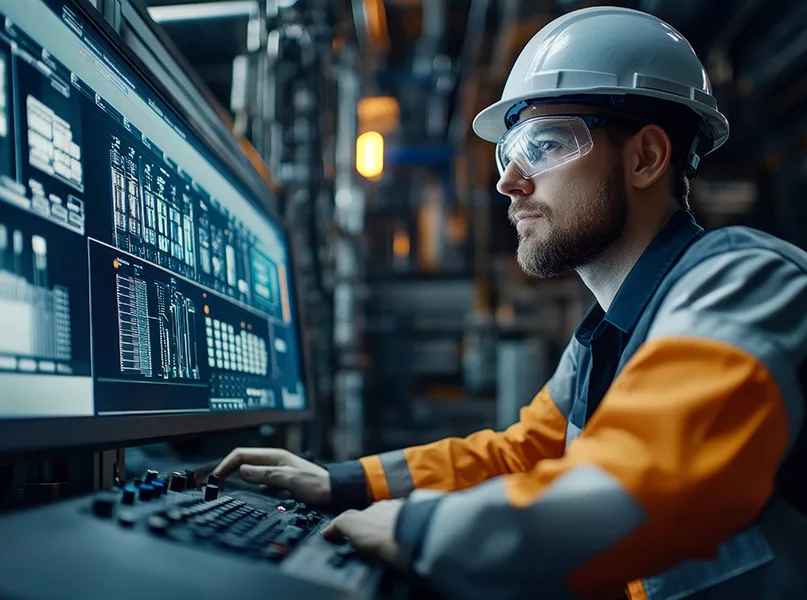
As such, international cooperation around clean technology transfer is likely the only way to level the playing field, as this would help resolve the divergence between developed and developing countries and their roles in global manufacturing.
Sustainable manufacturing doesn’t have to be a zero-sum game, but these solutions require coordinated action. A fragmented world where polluting economies dominate manufacturing, while deindustrialised economies engage in virtue signalling – is a lose-lose scenario, as it will fail to address climate change and exacerbate economic inequalities and geopolitical tensions.
We must recognise that true sustainability in manufacturing is not about shifting problems from one part of the world to another. Instead, it requires a systemic approach to recognise the global impact of our policies and state investigation into the right clean technologies at the right pace, reforming energy markets, and creating a more level playing field for manufacturers.
The choice before us is clear: we can either work together to create a sustainable and prosperous future for global manufacturing, or we can allow short-term thinking and national self-interest to lead us into a fragmented and unsustainable world. The time for decisive action is now.
